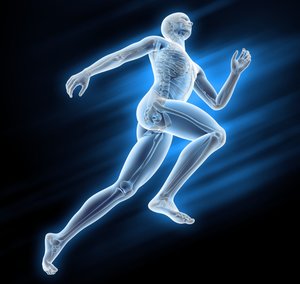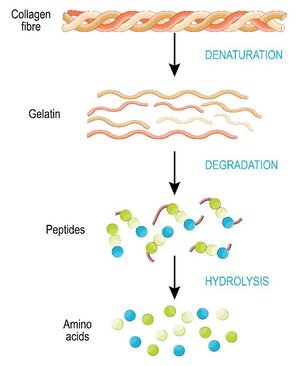Collagen’s current reputation in health and nutrition, rests largely on what it does for strength and flexibility. This explains why solutions such as Peptan or Colartix, for example, are making a difference in areas like sports performance, mobility, healthy aging and beauty from within. In the biomedical field, our X-Pure® portfolio – a range of pharmaceutical-grade, customizable, low-endotoxin gelatins suitable for many biomedical applications – is used because of its batch-to-batch consistency and high purity. But these gelatin and collagen applications are only the beginning, says Catarina.
Collagen communicates messages inside our bodies

‘We are discovering that collagen plays a far bigger part in our bodies than we assumed until now. Collagen actually influences cell behaviour by communicating messages within the body. For example, we are finding that collagen peptides can regulate certain metabolic pathways, like bone metabolism. Collagen is a holistic protein whose impact on different aspects of our health may turn out to reach much further than we know today. As we continue to research and innovate, we may find applications that will, for example, positively influence our sleep or our gut health. It may even contribute to the prevention of specific diseases. It’s impossible to predict, but the potential is clearly coming into view in current scientific research.’

Writing health messages with the collagen alphabet
Catarina compares the work of scientists unlocking the potential of collagen to that of a child learning the alphabet in order to be able to read an incredible story: the story of how our body functions and achieves balance. ‘Nature is highly efficient when it comes to storing and transmitting information. The same molecule can carry different types of messages depending on its aminoacid sequence and configuration. The collagen molecule is an excellent example of that. When in its 3D, triple helix structure, it resembles a tight rope and it gives the stability and flexibility our tissues need. But our body is also able to cut the collagen molecule into little pieces, releasing bioactive collagen peptides, whose aminoacid sequence can then be used as messengers to trigger cells to behave in a certain way. And by learning how to interpret the different messages encoded by the aminoacid sequences, meaning the collagen alphabet, we can develop new collagen-based products that can support different areas of our wellbeing.
Working on consistency, predictability, and customization
Collagen is an incredible biomaterial for biomedical applications. However, scientists are often wary of natural products due to batch variability, difficulties in purification and quality control. Natural products are often seen as a ‘black box’ and collagen is no exception ‘There are many different types of collagen and, because it is a natural material, no two batches are the same. So, consistency can be a challenge. That is why our production team goes through great lengths to achieve batch to batch consistency.
‘Beyond that, another challenge is customization. Once you achieve consistency, the next question we get is, ‘can you make it according to the specifications I need?’ Different applications require different biological and mechanical properties. We are currently exploring how different forms of processing can lead to the exact properties needed for specific applications. We are making steadfast advancements in the production of high-quality, reliable biomaterials by integrating expertise across different fields including manufacturing technology, material science and biology. Once again integration of knowledge from different areas is key to successful innovations.’

More data, greater complexity, targeted impact
With food supplements we also see a trend towards personalization thanks to the data that can be obtained by phone applications or personal devices, says Catarina. ‘It is more and more evident that each one of us has a unique health fingerprint. One-size-fits-all health and nutritional solutions may benefit all of us in some areas of general wellbeing: Peptan collagen peptides, for example, can positively influence the joint health, or the hair or skin beauty, of a wide range of the population. But as we collect more data from more people and delve deeper into health and nutritional mechanisms, we will be able to have far targeted impact. It’s exciting – and incredibly complex. One thing is clear: with collagen, we are on the brink of many valuable innovations.'
about Catarina’s passion for science and health
